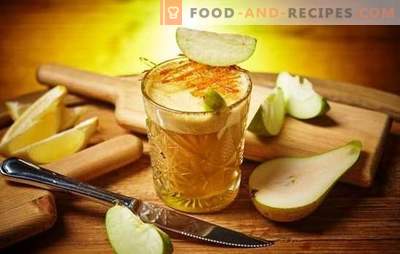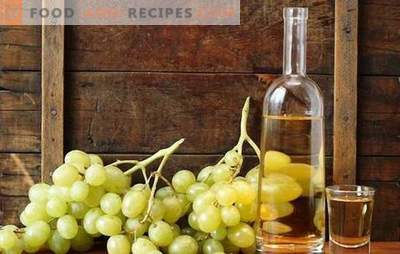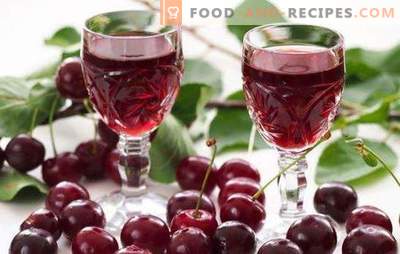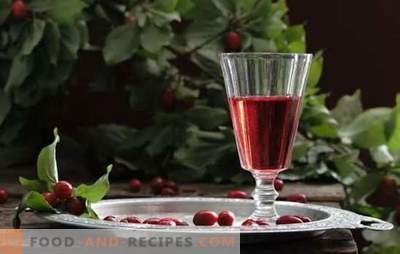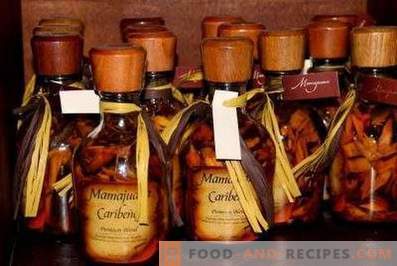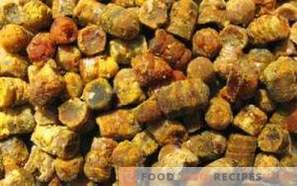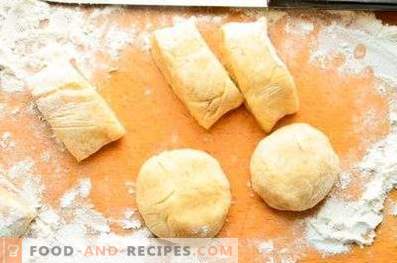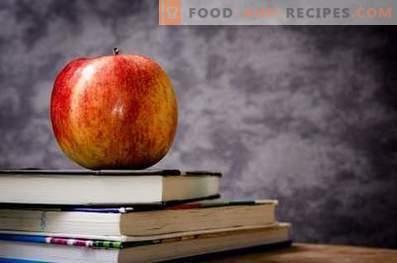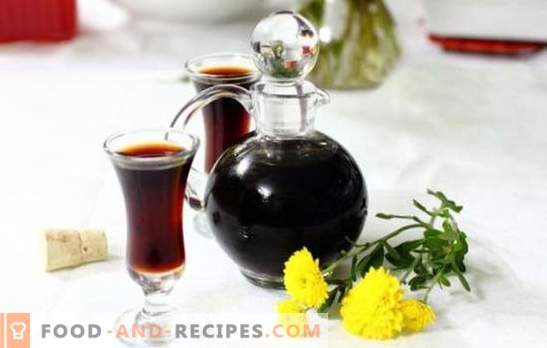
Preparing homemade tinctures in our time is a hobby with elements of applied art.
Maybe this hobby is not clear to everyone in the conditions when you can buy any alcoholic drink in a beautiful branded bottle, with medals and stars, with a bright and promising label. But, with the same success, you can “treat yourself” to a surrogate of unknown origin, or ordinary diluted alcohol, with the addition of artificial flavors.
The range of homemade tinctures may well compete with any large distillery, because these drinks are not made for profit and volume, but mainly for experimenting and tasting in a close circle of friends. What is important is the manufacturing process and the exchange of experience.
Homemade tincture at home - basic technological principles
The basis of the tincture - purified alcohol or alcohol-containing beverages, the quality of which must be given special attention. The second important component is the vegetable raw material, on which the taste and aroma of the drink depends, its medicinal properties, if we are talking about the manufacture of medicinal tinctures.
Wild plums are valued for their special tart taste, which does not completely disappear even after freezing the berries. The turnip is harvested after the first frost, they acquire maximum juiciness and some sweetness. Sometimes home winemakers collect wild plums in late August, long before the onset of frosts, and then freeze the berries in freezers.
The turnip is used to make tinctures, mainly in combination with other fruits, herbs and spices. In combination with honey, you can get a very interesting flavor range, and this tincture will decorate the home collection, as an elite drink.
Flowers, leaves and turn bark are also excellent raw materials. From the point of view of taste and aromatic properties, fruits and flowers are interesting. Harvesting of flowers begins during the flowering period, in the phase of blossoming bud. The turn is a honey plant with a very delicate and pleasant aroma. This quality must be used in the preparation of tinctures.
Strong blackthorn with a high concentration of vegetable raw materials can be the basis of home liqueurs, liqueurs, punches. Depending on the content of sugar and alcohol in tinctures, they are classified as:
Sweet: fortress 16-25%
Semi-sweet - 30-40%
Bitter - 30-60%
Tinctures include, in view of the similarity of manufacturing technology, gins (45%), balms (35-45%). As can be seen, the alcohol content in fruit tinctures varies quite freely, which facilitates the process of their home-made, but the sugar content in these drinks has stable values:
Balsams and gins do not contain sugar at all;
In bitter tinctures, its amount reaches no more than 7%;
In semi-sweet tinctures - 10% sugar;
In sweet - 8-30%.
Other components of the tinctures have a very different composition, and in this matter you can be resourceful, but traditionally at least ten ingredients are used to make gins and balsams. Sometimes the composition of balms includes up to 50-60 names of herbs and spices.
The essence of the process of insisting the fruit on alcohol is to dissolve the substances contained in the vegetable components. Alcohol plays the role of solvent. The duration of the process of infusion depends on the method of extraction.
The easiest option: the berries are crushed and aged in alcohol. The higher the alcohol strength, the better the result. After receiving the extract (saturated solution), you can bring it to the desired strength with fruit juice, distilled water, and for the preparation of liqueur or cream - syrup, milky egg cream.
You can speed up the preparation of the tincture by stirring or heating the mixture. To do this, the fruit immersed in alcohol, shaken, stirred during the whole process of infusion.
The method of heating can be used with caution: alcohol is highly flammable and volatilizes, and this must be remembered. Warm up the container in a water bath in a sealed form to a temperature not higher than 60-70 ° C.
1. Turnip on honey at home
Ingredients:
Wild plum berries 2.5 kg
Vodka (45%) 3 liters
Honey 500 g
Cinnamon 15g
Clove 20 g
Cooking Technology:
Sort the collected berries. To separate the juice more intensively, hold the washed berries for a while in the freezer so that they are slightly frozen. Insist they have a long time, so remove the bones. Prepare mashed potatoes: the smaller the particles of the raw material, the better they will combine with alcohol. Combine the berry mass with honey and alcohol. Stir and transfer into a lockable container. To insist, choose a bottle of dark glass. Mix the contents of the bottle daily for a month. When the liquid becomes clear, and a precipitate forms at the bottom of the tank, carefully pour off the tincture, trying not to stir the thick. To maintain the tincture need not less than a year, at room temperature and in a place inaccessible to sunlight. When aged for 3-4 years, the drink gets a soft and rich taste. At this time, you can add spicy spices to the tincture, soak for 10-14 days, strain and pour the tincture into dark glass bottles.
2. Torn tincture - cooking gin at home
Ingredients:
Alcohol (92%) 3 L
Black currant: fresh berries - 1.0 kg; leaves - 200 g
Sugar 2 kg
Turn: berries - 2 kg; flowers - 400 g
Juniper (dried berries) 100 g
Coriander 50g
Fennel fruits 100 g
Anise (Badian) 3-4 stars
Purified water 1.5 liters
Cooking Technology:
The process of making this homemade gin is long and a little troublesome. In addition, the technology requires a distiller, but the drink is worth it! The output should be a bright ruby transparent gin, very fragrant, with a mild flavor.
First you need to stock up on currant jam in the summer berry season. At about the same time, collect the turn flowers.
Rub the berries with an equal amount of sugar, transfer to a sterile jar, clean in the cold until autumn.
Turnip flowers, currant leaves, anise, fruits of fennel and juniper, put coriander seeds in a bottle and pour it with alcohol. Place the bottle somewhere in the kitchen so that it is convenient to shake it daily, but keep it in a closet in a dark place.
In the autumn, collect the black berries, wash, shake off the water well, remove the bones, chop up with a blender, combine with sugar (1 kg), mix. You can warm slightly to dissolve sugar quickly.
Combine the thorn puree with ready-made currant jam, add alcohol tincture. Soak the mixture for 3-4 weeks, tightly closing the container. Stir the contents daily, shaking the bottle.
After this, add water and distill through the apparatus to obtain a clear and fragrant liquid, with a strength of up to 30%.
3. Sweet homemade tincture at home
Ingredients:
Turn 1.0 kg
Sugar 2.5 kg
Alcohol wine 2 l
Cinnamon
Carnation
3-4 oranges
Ginger Root
Cardamom
Water 0.5 l
Cooking Technology:
Prepare berries and oranges, fresh ginger root. Grind all the ingredients, pour in sugar, add water and heat the mass until sugar is completely dissolved. Add alcohol and close the mixture tightly in a prepared container. Pour water into a large saucepan, filling it in about 1/3 of it. Immerse the bottle with the future tincture in cold water. Slowly heat the pan over the fire. When the water temperature reaches 70 ° C, turn off the stove. Leave the bottle in hot water until natural cooling. Repeat the heating 2-3 times, for two weeks. After this, strain the tincture. Leave it in a dark place alone, until the liquid becomes clear, remove from the sediment, as is done with wine.
4. Blackthorn tincture at home with apples and cinnamon
Ingredients:
The turn
Apples 800 g
Cinnamon 2 Sticks
Vodka 1.6 l
Sugar 0.5 kg
Homemade tincture - useful tips and tricks
- A strong blackthorn can be used with great success for making liqueurs, creams, punches, cocktails at home.
- In the process of making homemade tinctures, be sure to pay attention to the quality of the alcohol: this component is no less important than the herbal composition of the drinks. The best option - wine alcohol. You can use, of course, homemade moonshine, but be sure to expose it to double distillation and thorough cleaning: the slightest presence of fusel oils will spoil the aroma of the tincture.
- To clean the alcohol at home, use a solution of potassium permanganate, charcoal.

